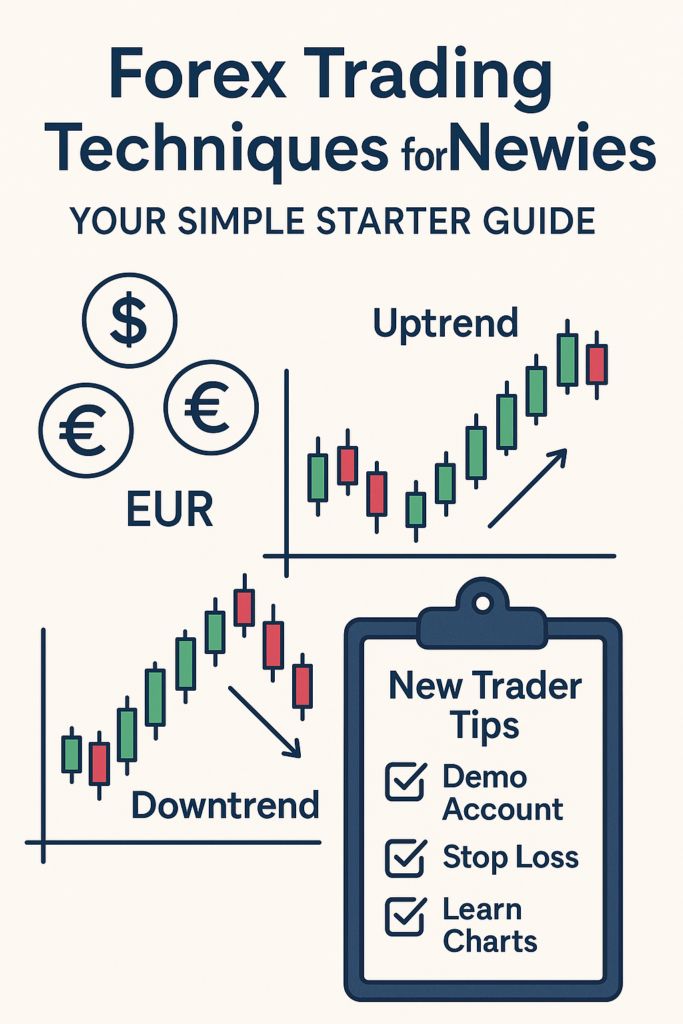
Stepping into the world of forex trading can feel like learning a whole new language. With all the charts, jargon, and fast-moving markets, it’s easy to get overwhelmed. But don’t worry—if you’re new to forex, I’ve got you covered with some straightforward techniques to help you get started on the right foot.
1. Get to Know the Basics First
Before you even think about placing a trade, it’s crucial to understand what you’re getting into.
- Forex 101: Forex (short for foreign exchange) is basically where you trade currencies—think of it like swapping dollars for euros, but on a much bigger scale.
- How It Works: Currencies rise and fall in value all the time, influenced by things like global news, politics, and economics.
- When It Happens: The forex market is open 24 hours a day during the week, which is great if you want flexibility around your schedule.
2. Pick the Right Broker
Your broker is your main point of access to the forex market, so choose wisely.
Look for a broker that’s:
- Properly Regulated: This keeps your money safer.
- User-Friendly: Platforms like Meta Trader 4/5 are great for beginners.
- Helpful: A broker that offers training materials, guides, and webinars is a big plus when you’re just starting out.
3. Learn to Read the Charts
Charts can look intimidating at first, but once you get the hang of them, they’re your best friends in trading.
- Candlestick Charts: This show how prices move and can reveal useful patterns.
- Support & Resistance: These are levels where prices often bounce back or break through—key to spotting opportunities.
- Trend Lines: These help you figure out if a market is generally moving up, down, or sideways.
4. Always Manage Your Risk
If there’s one golden rule in forex, it’s this: protect your capital.
- Stop-Loss Orders: These automatically close your trade if things go south, limiting your losses.
- Risk Small: A good rule of thumb is to risk no more than 1-2% of your account on a single trade.
- Don’t Put All Your Eggs in One Basket: Spread out your trades to avoid getting wiped out by one bad move.
5. Practice with a Demo Account
It’s tempting to jump right in, but a demo account is where you should start.
- Why? You get to test out your strategies with fake money—no risk involved.
- Bonus: It helps you get comfortable with the trading platform and understand how everything works before you start using real cash.
6. Find a Trading Style That Fits You
There’s no one-size-fits-all strategy, so try a few to see what matches your personality and lifestyle:
- Day Trading: Quick trades, in and out within the same day.
- Swing Trading: Holding positions for a few days to catch bigger moves.
- Position Trading: Long-term trading for those who prefer a more hands-off approach.
7. Keep Your Emotions in Check
One of the biggest mistakes new traders make. Letting emotions take over.
- Stick to Your Plan: Don’t let fear or greed push you to make rash decisions.
- Take Breaks: Step away from the screen regularly—it helps keep your mind clear.
- Accept Losses: Even the best traders lose sometimes. What matters is learning from it and moving on.
8. Stay Curious and Keep Learning
The forex market is always changing, so it’s important to keep learning as you go.
- Follow financial news and stay updated on what’s happening globally.
- Join online communities where you can swap tips and get advice.
- Keep reviewing your trades to see what’s working and what’s not.
Final Thoughts
Forex trading isn’t a shortcut to overnight riches, but with patience, discipline, and a commitment to learning, you can build real skills and confidence over time. Start small, stay focused, and remember: every expert was once a beginner.